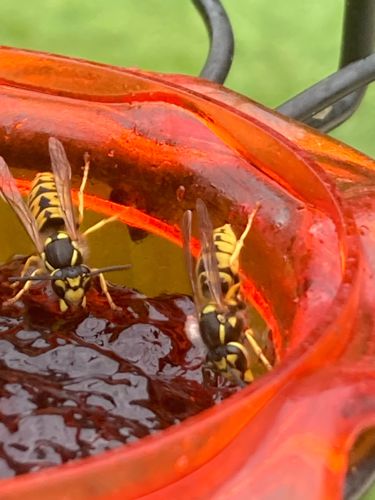Yellowjacket
Scientific Name: Vespula spp. or Dolichovespula spp. (common genera)
Order & Family: Order: Hymenoptera, Family: Vespidae
Size: Typically 10-16 mm (0.4-0.6 inches) in length

Natural Habitat
Yellowjackets can be found in various habitats, including forests, grasslands, urban, and suburban areas. They typically build their nests in protected locations such as underground burrows, tree hollows, wall voids, attics, or dense shrubs.
Diet & Feeding
Adult yellowjackets feed on nectars, fruits, and other sugary substances. They also forage for protein sources like insects (both live and dead), spiders, and carrion to feed their larvae. The larvae, in turn, secrete a sugary substance that the adults consume.
Behavior Patterns
Yellowjackets are social insects living in colonies with a queen, workers, and drones. They build nests from chewed wood fibers, often underground or in sheltered cavities. Worker yellowjackets forage for food, care for the young, and defend the nest vigorously. They become more aggressive in late summer and early fall as natural food sources diminish and the colony's population peaks. They are attracted to sugary foods and protein.
Risks & Benefits
Risks: Yellowjackets are known for their aggressive stinging behavior, especially when their nest is threatened. Unlike bees, they can sting multiple times. Their stings are painful and can cause allergic reactions in sensitive individuals, ranging from localized swelling to life-threatening anaphylaxis. They can also be a nuisance at outdoor gatherings due to their attraction to food and drinks. Benefits: Yellowjackets are beneficial predators of various insect pests, including flies, caterpillars, and other agricultural pests, thus playing a role in natural pest control. They also contribute to pollination by visiting flowers, though less efficiently than bees.
Identified on: 8/9/2025